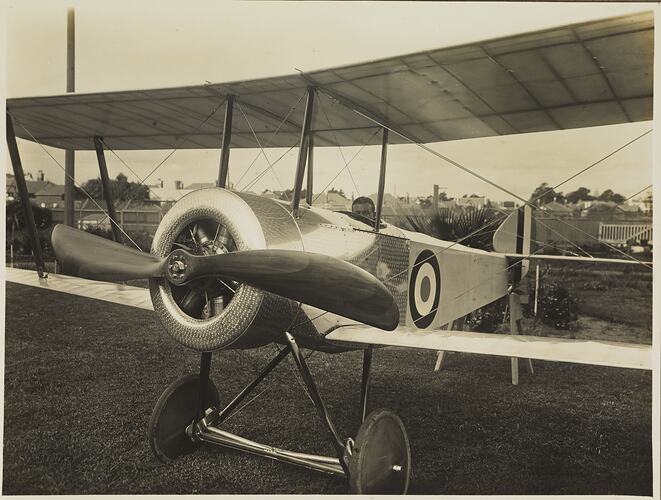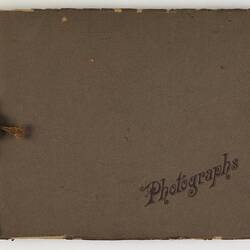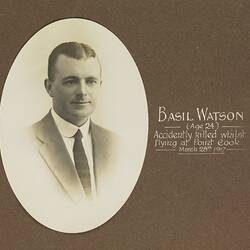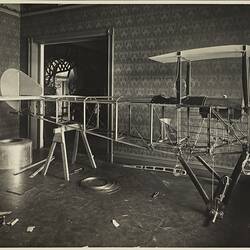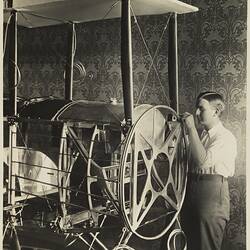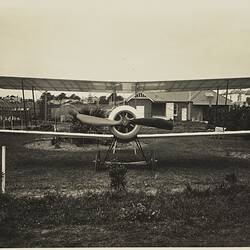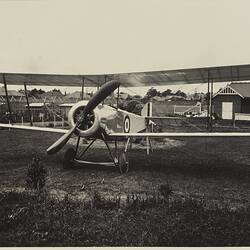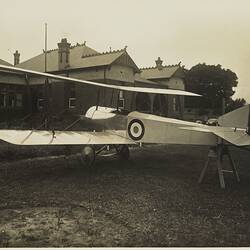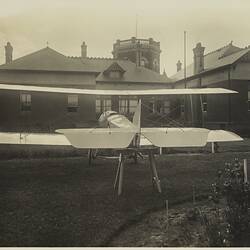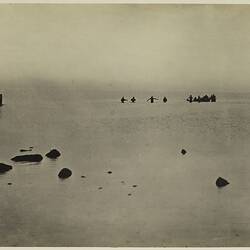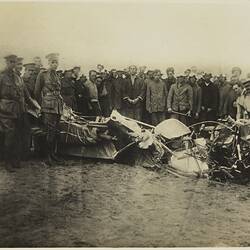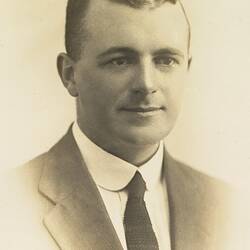Summary
Part of a commemorative photograph album produced by Sears' Studios, Melbourne, documenting the work of Basil Watson in constructing a biplane at his family's home 'Foilacleugh' in Elsternwick, Victoria, during 1916, and the aftermath of his fatal crash off Point Cook on 28th March 1917. The biplane was based on the design of the Sopwith Pup, which Watson was familiar with from his time working as an engineer and test pilot with the Sopwith Aviation Co. and Imperial Army in Britain, during 1914-1916. Watson piloted the plane on pioneering flights to Bendigo and western Victoria. He performed many public acrobatic flying demonstrations and flew the first official airmail between Mt Gambier and Melbourne in February 1917. He was killed when a component of his aircraft failed during an aerobatic demonstration over Point Cook, Victoria, on 28th March 1917, causing the wings to collapse, plunging the aircraft into Port Phillip Bay. His death was the earliest recorded aviation fatality in Australia. His death deeply affected the Watson family, who continued to publish tribute notices in Melbourne's daily newspapers on each anniversary for over a decade.
Description of Content
Close-up oblique left-hand front view of Basil Watson's completed Sopwith-type biplane on the lawn behind the Watson family home 'Foilacleugh' in Elsternwick, Victoria. Watson is seated in the cockpit looking at the photographer. The rear of the fuselage is propped up on a wooden saw horse. Details seen in the photo include the laminated Circassian walnut propeller that was made for Watson by the timber merchants James Moore & Sons, of City Road, South Melbourne, and the seven-cylinder Gnome rotary engine behind the engine cowling. Of particular note is the tri-colour [presumably red, white & blue] roundel on the side of the fuselage and tri-colour vertical stripes on the rudder, reflecting standard military aviation markings that were only introduced by the British and Australian Air Corps in mid 1915. It is unclear why as a civilian aircraft Watson's plane used these markings, however, it might reflect his former association with military aviation in Britain or his plans to fly the plane out of the AFC Cenrtral Flying School airfield at Point Cook. There are no civilian registration markings on the plane (which were not required in Ausrtalia until 1921), although Watson did apply for offical registration of the aircraft in October 1916. In the background part of the Watson's extensive garden can be seen as well as the rear of other houses on St Kilda Street, Elsternwick.
Physical Description
Horizontal landscape format rectangular gelatin silver emulsion photographic print, glued to a rectangular landscape format brown cardridge paper page, without caption.
More Information
-
Collection Names
-
Collecting Areas
Transport, Home & Community, Images & Image Making, Public Life & Institutions
-
Creator
Sears Studio, Melbourne, Greater Melbourne, Victoria, Australia, 1916
It is not clear whether Sears took all of the original negatives but they appear to have at least printed the photographs in a standard format and mounted them in the commemorative album. -
Person Depicted
Mr Basil G. Watson, Elsternwick, Greater Melbourne, Victoria, Australia, 1916
-
Place & Date Depicted
'Foilacleugh', St Kilda Street, Elsternwick, Greater Melbourne, Victoria, Australia, 1916
-
Format
Photograph, 8" x 6", Black & White
-
Classification
-
Category
-
Discipline
-
Type of item
-
Image Dimensions - Photograph
208 mm (Width), 156 mm (Height)
Landscape format. Dimensions including 3 mm white border.
-
Keywords
Aero Engines, Aviation, Aviation Pioneers, Aircraft, Aircraft Manufacture, Aircraft Propellers, Biplanes, Chimneys, Civilian Aviation, Fences, Houses, Domestic Gardens, Military Aviation, Portraits, Roofs, Front Yards
